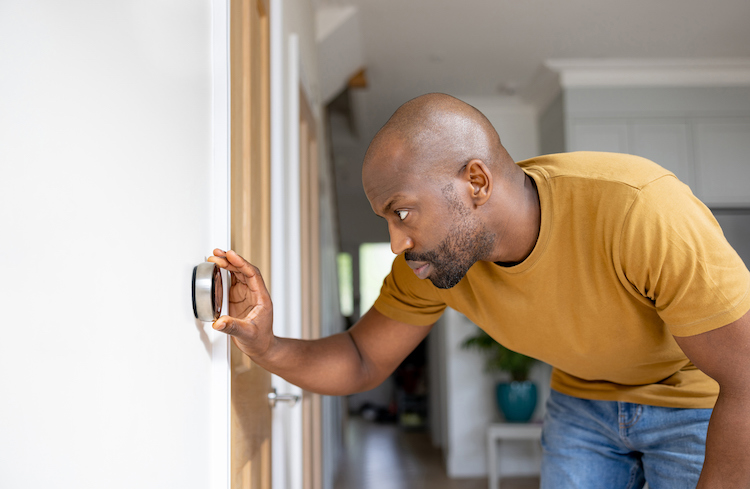- Home
- The Tips & Tricks
- The Hidden Danger: How to Safely Turn On Your Heater and Avoid Carbon Monoxide Poisoning

The Hidden Danger: How to Safely Turn On Your Heater and Avoid Carbon Monoxide Poisoning
The temperatures are dipping down, which means it is time to turn on heaters at home. Carbon monoxide (CO) is a silent killer that poses a serious threat to our health and safety. It is an odorless, colorless gas that is produced when fuels such as gas, oil, coal, and wood are burned. When inhaled, carbon monoxide replaces oxygen in the bloodstream, leading to carbon monoxide poisoning. Understanding the dangers of carbon monoxide and taking necessary precautions is crucial to protect ourselves and our loved ones.
The Dangers of Carbon Monoxide
Carbon monoxide poisoning can have severe consequences, ranging from mild symptoms to fatal outcomes. The initial signs of carbon monoxide poisoning are often mistaken for flu-like symptoms, including headache, dizziness, nausea, and fatigue. Prolonged exposure to high levels of carbon monoxide can lead to more severe symptoms such as confusion, chest pain, and loss of consciousness. In extreme cases, it can result in death.
Sources of Carbon Monoxide in the Home
Carbon monoxide can originate from various sources within our homes. Common culprits include faulty or improperly maintained heating systems, gas stoves, fireplaces, and generators. Blocked chimneys, damaged flues, and inadequate ventilation can also lead to the buildup of carbon monoxide indoors. It is essential to identify and address these potential sources to ensure a safe living environment.
Importance of Proper Ventilation
Proper ventilation is key to preventing carbon monoxide buildup and ensuring the safe operation of heating systems. Adequate airflow allows carbon monoxide to dissipate, reducing the risk of poisoning. Regularly clean and inspect vents, chimneys, and flues to ensure they are free from blockages. It is also advisable to keep windows open when operating fuel-burning appliances and to use exhaust fans in kitchens and bathrooms to maintain good airflow.
Steps to Safely Activate Your Heater
When preparing to turn on your heater for the first time of the season, there are several crucial steps to follow to minimize the risk of carbon monoxide poisoning. Firstly, ensure that your heating system is professionally installed and regularly inspected. Check for any signs of damage or deterioration, such as cracks or leaks. It is vital to follow the manufacturer’s instructions for proper operation and maintenance. Additionally, never use gas ovens or stovetops to heat your home, as they are not designed for this purpose and can release dangerous levels of carbon monoxide.
Carbon Monoxide Detectors: Why You Need Them
Investing in carbon monoxide detectors is a crucial step in protecting your home and loved ones. These devices can detect the presence of carbon monoxide and emit an alarm when levels become dangerous. Install detectors on each level of your home, especially near bedrooms. Regularly test the devices and replace batteries as needed. Carbon monoxide detectors are an inexpensive yet effective way to provide early warning and save lives.
Maintenance and Inspection of Heating Systems
Regular maintenance and inspection of your heating systems are essential to prevent carbon monoxide poisoning. Schedule annual inspections by qualified technicians who can identify any potential issues and ensure that your system is operating efficiently and safely. Clean or replace air filters regularly to maintain proper airflow. By taking these proactive measures, you can minimize the risk of carbon monoxide leaks and protect your household.
Signs and Symptoms of Carbon Monoxide Poisoning
Recognizing the signs and symptoms of carbon monoxide poisoning is essential in preventing further harm. Apart from the flu-like symptoms mentioned earlier, other indicators include shortness of breath, blurred vision, rapid heartbeat, and even seizures. If you suspect carbon monoxide poisoning or experience any of these symptoms, it is crucial to seek immediate medical attention and evacuate the premises.
Safety Precautions for Year-round Protection
While carbon monoxide poisoning is often associated with colder months when heating systems are in use, it is essential to take precautions year-round. Regularly check vents and chimneys for blockages, even during warmer seasons. Avoid using portable fuel-burning devices indoors, and never leave vehicles running in an attached garage. Educate yourself and your family about the dangers of carbon monoxide and the necessary safety measures to adopt.
Carbon monoxide poisoning is a hidden danger that can have devastating consequences. By understanding the risks, recognizing the symptoms, and taking necessary precautions, we can protect our homes and loved ones from this silent killer.
